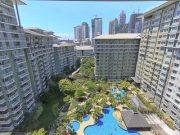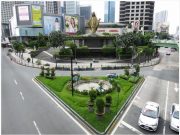A property owner with a valid title finds informal settlers on their land. The owner wants their property back, while the settlers need a place to live. This is more than a private dispute; it’s a serious legal and social issue.
Your title versus their need for a roof. This isn’t just about ownership; it’s about the law’s tough job of protecting private property rights while ensuring social justice for the homeless. Understanding one key law: the Urban Development and Housing Act (RA 7279), is the only way forward for both sides.

Key Players in Land Disputes
To solve these disputes, you must know who you are dealing with. The law is not blind; it distinguishes between the truly needy and criminals.
| Player | Definition | Legal Standing & Treatment |
| Informal Settler Families (ISFs) | Underprivileged citizens are genuinely in need of shelter. | Protected. Entitled to humane treatment, due process, mandatory relocation assistance, and housing priority under RA 7279. |
| Squatters (General Term) | Anyone occupying land without the owner’s explicit consent. | A broad term. Their treatment depends on whether they fit the definition of an ISF or a Professional Squatter. |
| Professional Squatters & Syndicates | Individuals or groups who occupy land primarily to profit by selling, leasing, or organizing illegal housing lots. | No Protection. They receive no legal relief, are subject to immediate eviction, and face criminal penalties under RA 7279. |
Informal Settler Families (ISFs) are poor people who need help and are protected by Republic Act No. 7279 (UDHA). They have the right to be treated kindly, given proper legal process, and helped with moving to a new place if needed. On the other hand, the word “squatter” means anyone living on land without the owner’s permission. “Professional squatters” are individuals or groups who occupy land primarily to generate income by illegally selling or renting out housing. These professional squatters do not get legal protection and can be punished under the UDHA.
Bottom Line: Property owners must distinguish between legitimate Informal Settler Families (ISFs), who are entitled to mandatory relocation and legal protections, and criminal Professional Squatters, who can be promptly addressed through legal action and penal sanctions.
RA 7279 (UDHA)
The Urban Development and Housing Act of 1992 (RA 7279) is the key law that guides how land disputes are handled. It balances firmness with fairness:
The law clearly punishes professional squatters and syndicates but also protects genuine Informal Settler Families (ISFs) by providing a fair and humane relocation process.
Agencies like the National Housing Authority (NHA) and the Presidential Commission for the Urban Poor (PCUP) enforce this law. They work to reduce housing shortages and manage informal settlements effectively.
Stop the Clock: How to Protect Your Land from Squatters’ Claims
Your land title is strong, but it isn’t automatically protected forever. In the Philippines, an unauthorized occupant, even a squatter, can eventually claim legal ownership of your property through a process called prescription. This is a major risk, but it’s completely avoidable if you act decisively.
Here is a breakdown of how possession can become ownership and, more importantly, how you stop it.
The Two Paths to Stealing Your Title
Philippine law recognizes two ways a possessor can legally acquire your land over time, though only one is a real threat in squatting cases.
1. Ordinary Prescription: Not a Concern for Squatters
Ordinary prescription requires 10 years of possession, but it’s rarely a worry for landowners dealing with squatters. Why? Because the possessor must meet two strict standards that squatters almost always lack:
- Good Faith: They must genuinely believe they are the rightful owner. A squatter, by definition, knows they lack permission.
- Just Title: They must possess a document (like a deed of sale) that looks legally sufficient, even if it’s defective.
The Takeaway: If you’re dealing with squatters, they usually cannot meet these rules, making this path irrelevant.
2. Extraordinary Prescription: The Real Threat
This is the rule that allows a squatter to steal your title. It requires 30 years of possession, and the crucial distinction is that it requires NO good faith and NO just title. This means the possessor can be fully aware they’re occupying your land illegally and still make a claim.
To succeed, their 30-year possession must be:
- Continuous: Uninterrupted for the full 30 years.
- Peaceful: Not acquired or maintained by force or violence.
- Public (Open): Visible to the community and to you, the true owner, giving you a clear chance to object.
- Adverse: They must act like the true owner, excluding everyone else.
The Main Risk: The long 30-year period is your primary vulnerability. If you, the landowner, sit on your hands and fail to take legal action before this deadline, the squatter can successfully claim the property.
Your Defense: Interruption is Key
The running of the prescription period, the 10 years or the 30 years, is interrupted and stopped the moment you take successful legal action.
The Recommendation: Don’t wait. You must act aggressively and promptly.
An action to recover possession of real property can involve a summary ejectment action (like accion interdictal for forcible entry or unlawful detainer), a plenary action for the better right of possession (accion publiciana), or an action to recover ownership (accion reivindicatoria). The appropriate legal action depends on factors such as whether the dispossession was recent (within one year) or if a claim of legal ownership is being made.
The moment you discover unauthorized occupation, you need to file a formal complaint:
- Forcible Entry: If possession started through force, intimidation, or stealth (within 1 year of discovery).
- Unlawful Detainer: When the occupant’s initial entry was lawful, but their continued possession has become illegal (within one year from the last demand).
Simply put: Filing a lawsuit is the strongest legal way to stop a prescription from taking effect. When you start a successful case, you officially show the court system that the possession is not peaceful and not accepted. This one clear action is the best way to protect your property title from being claimed through the 30-year rule.
Landowner Protection and Due Diligence
Understanding the difference between the 10-year and 30-year periods is crucial for effective property protection.
Essential Steps for Landowners:
- Periodic Inspection: Regularly inspect the property to detect any unauthorized occupation early.
- Documentation: Ensure all land titles are properly registered with the Register of Deeds.
- Timely Legal Action: Upon discovering an intruder, the landowner must take timely legal action to interrupt the prescriptive period. Waiting longer than 30 years generally forfeits the right to recover the land from the continuous, public, and peaceful possessor.
- Clear Boundaries: Maintain clear boundaries and signs of ownership to demonstrate continuous adverse possession against unauthorized claims.
The Indefeasible Shield
The greatest protection a landowner has is the Torrens Title (Certificate of Title). The Supreme Court has repeatedly affirmed that land covered by a registered title is secure and indefeasible. Prescriptions generally cannot run against titled land.
Landowner’s Confident Call to Action: If your registered land is occupied, it is crucial to act swiftly and legally by formally interrupting the prescriptive period. The most effective way to do this is by filing an ejectment suit, such as a forcible entry case if the possession began through force, intimidation, or stealth, or an unlawful detainer case if the possession initially started legally but continued after permission was withdrawn, provided this is done within one year from the last demand to vacate. Filing these cases promptly is essential to protect your property before the 30-year prescriptive period can be claimed by the occupant.
The State’s Mandate: Humane Resettlement
While landowners have the right to get their property back, the government must make sure that Informal Settler Families are treated fairly and given due process. The Urban Development and Housing Act (UDHA) establishes clear guidelines to ensure that evictions are conducted properly and without causing harm or confusion.
The Priority: On-Site and In-City
The UDHA clearly states that when relocating Informal Settler Families (ISFs), their well-being and ability to earn a living must come first.
The goal is always to avoid moving people. The best plan is On-Site Development, which means improving the existing community right where the Informal Settler Families (ISFs) already live, often using programs like the Community Mortgage Program. However, if the land is a danger zone or needed for major public projects (like new roads), then Relocation is necessary. When families must move, the new site must be livable and viable, not just an empty field.
When a family has to be moved, the new relocation site isn’t just a patch of land—it must meet strict standards to be considered viable. The law prefers solutions that cause the least disruption, meaning on-site development is best, followed by in-city, near-city, and then off-city moves. Crucially, the site must immediately provide essential services like water, electricity, and roads, along with access to schools and health centers. Most importantly, the site must allow residents access to their jobs; otherwise, people will simply move back to the city out of necessity.
Eviction, Demolition, and the Settler’s Shield
Demolition is never allowed to be a surprise or brutal. The law demands a strict, humane, and just process for every eviction. Crucially, this procedure must be led by the Local Government Units (LGUs), ensuring the action is orderly and adheres to all legal safeguards.
If you are an Informal Settler Family (ISF) facing eviction, the law provides clear, non-negotiable protections. You must receive a 30-day written notice before any demolition can happen. If the land is privately owned, the owner must first secure a court order before you can be removed. Furthermore, the demolition itself can only happen during humane hours (8:00 a.m. to 3:00 p.m.) and is banned on weekends or holidays. Finally, your local government must talk to you about the resettlement plan before any action is taken.
Recourse and Assistance
Informal Settler Families have strong recourse if these procedures are violated:
- Legal Action: You can file for a Temporary Restraining Order (TRO) or injunction if the LGU fails to provide a viable relocation site or violates due process. You may also claim damages for lost livelihood.
- Relocation Assistance: The LGU is legally required to provide financial aid, relocation assistance, or temporary shelter.
- Agency Support: Do not fight alone. Agencies like the PCUP (Presidential Commission for the Urban Poor) and the PAO (Public Attorney’s Office) are there to ensure your rights under RA 7279 are protected.
Sustainable Urban Planning
The conflict between Squatter’s Rights vs. Relocation can only be resolved through disciplined adherence to the law combined with compassionate urban planning.
For landowners, it is essential to protect their title by acting swiftly and utilizing the courts through actions such as Forcible Entry or Unlawful Detainer to preserve their legal rights. Prompt legal action is key to preventing squatters from acquiring ownership through prescription.
For informal settlers, understanding your rights under the Urban Development and Housing Act (RA 7279) is crucial. While cooperating with legal processes, you should also demand a viable resettlement package that genuinely addresses livelihood concerns. Without such support, displaced families often face the cycle of returning to urban areas.
The UDHA provides a clear roadmap for balancing property rights and social justice. Ultimately, it is the responsibility of both private citizens and government agencies to follow this law strictly and humanely to achieve fair and lasting solutions.

























